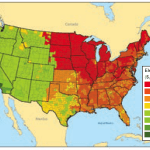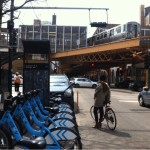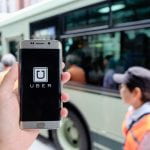Blog
July 20, 2017
Fear Knot, Global Maritime Trade Industry: These SO2 Levels can be Achieved Schooner than you Think

Where did the shirt you’re wearing come from? If you’re like most Americans, it was probably imported after being produced by a factory in Southeast Asia, which accounted for over 70% of clothing imports to the US in 2013. As relatively low-value items,…
June 26, 2017
Do electric vehicles actually increase emissions?

In Beijing, the capital of China, there are more than 5.6 million vehicles now which emit nearly one million tons of air pollutants per year. In 2016, there were 39 heavy-polluted days because of high levels of PM 2.5 (particulate matter smaller than 2.5 microns). Vehicle emissions account for more than 30 percent of local…
June 20, 2017
Prime Now or Prime Later?

Recently Amazon Prime Now has come up in a number of conversations I have been involved with. One group complained that they were running out of beer, and rather than going to get some they joked about ordering some on Prime Now. For those who have not yet heard of Amazon’s Prime Now, it is…
June 7, 2017
The Chicken-Egg Problem of Transit and Density

Yanbo Ge As two cities with similar regional importance in the Pacific Northwest, Seattle and Vancouver BC have a lot of similarities when it comes to climate and economic status. The two even hold pretty much the same city population (both a little more than 600,000 people). But Vancouver is much denser on average than…
May 25, 2017
Will Tesla’s Solar Roof provide cost-effective electric vehicle charging in Seattle?

Last Fall Tesla unveiled one of its newest products, the solar roof. What separates this solar panel from other solar panels is its aesthetics. As opposed to your traditional solar panels, these panels offer a more incognito design, which is meant to mimic different types of traditional roofing styles. The styles include Tuscan shingle and…
May 18, 2017
EV adoption, fast charger operations, and project economics
One of the most important factors influencing adoption of battery electric vehicles (BEVs) is the availability of charging infrastructure. Adequate infrastructure can help to address one of the biggest disincentives to adoption of BEVs, range anxiety. DC fast chargers help with the issues regarding charging since users do not have to spend a lot of…
April 21, 2017
Are bikeshare trips being linked with L train travel in Chicago?

Recently, I have been studying the bikeshare systems in the Washington D.C. and Chicago areas. One of my projects focuses on the interaction between bikesharing and the L Train stations in the Chicago area, in particular, how L ridership is affected by the presence of bikesharing. When doing the analysis our results suggested that…
April 19, 2017
Uber flat fares
At the beginning of the March, I received an offer from Uber to purchase a flat fare riding package for one month. The offer guaranteed a $2.49 flat-fare for UberPool and $4.49 flat-fare for UberX rides within a specific zone as shown in the following map. The flat fare zone did not include the entire…
April 17, 2017
Rethinking the park and ride for the 21st century: Part I
Two major trends in mobility mean that it is time for transportation agencies to rethink the role of the humble park & ride as a tool for promoting more sustainable transportation. By enhancing pickup and dropoff facilities and accommodating self-parking cars, a park & ride can increase both the number of travelers served and the…
April 5, 2017
TNCs and transit: frenemies? Redux.

After running for six years in New York, Uber was suspected of “stealing” transit ridership and adding more to the traffic gridlock. According to statistics from the Metropolitan Transportation Authority, the annual subway ridership fell slightly in 2016 after many years of consistent growth. One noteworthy detail, however, is that the weekday ridership was at…
Previous page Next page
Recent Comments